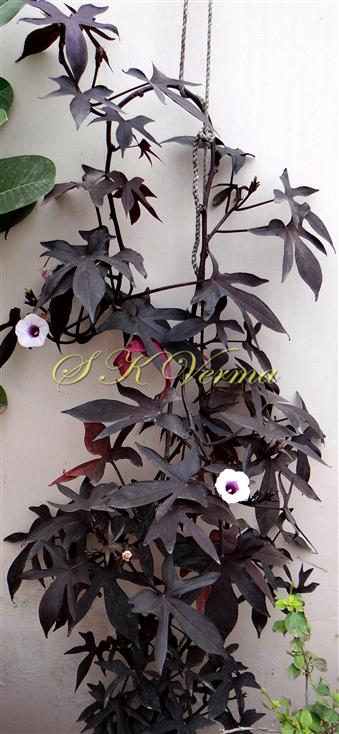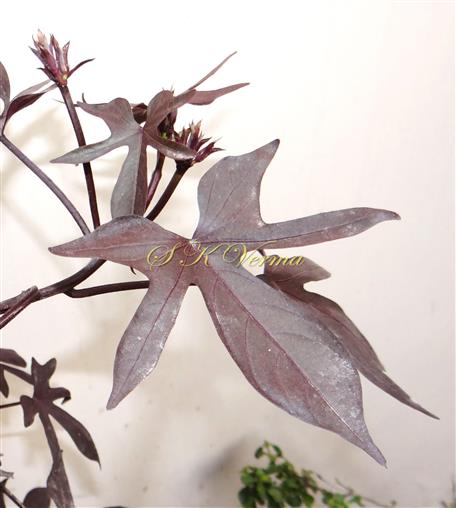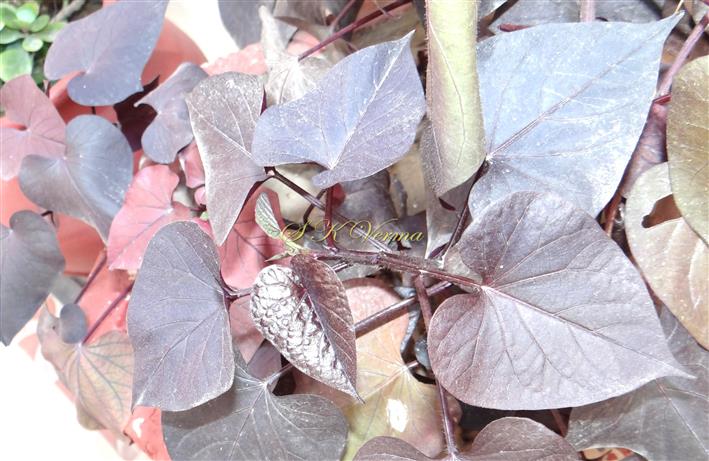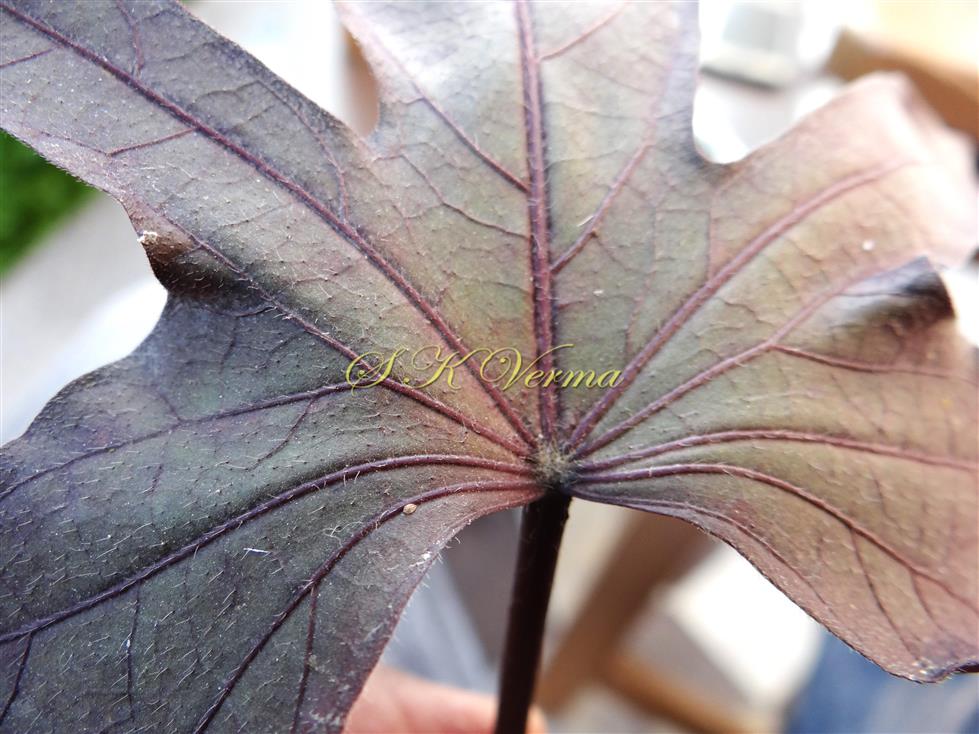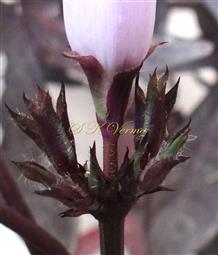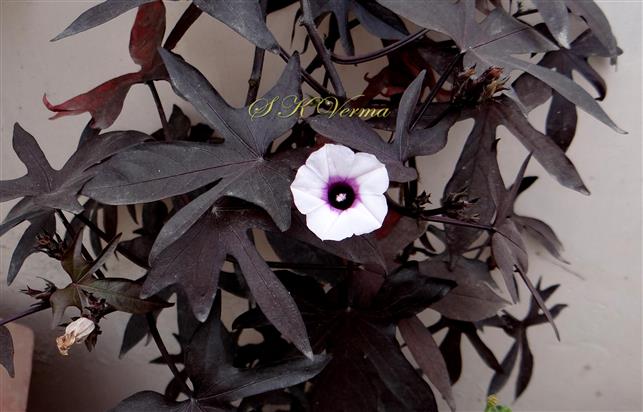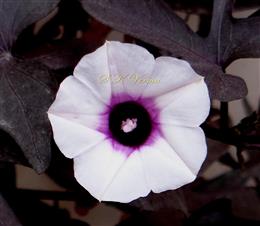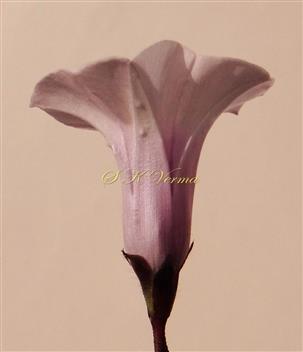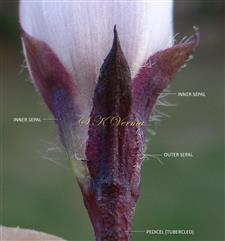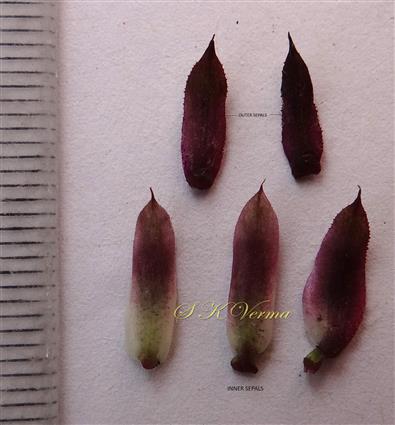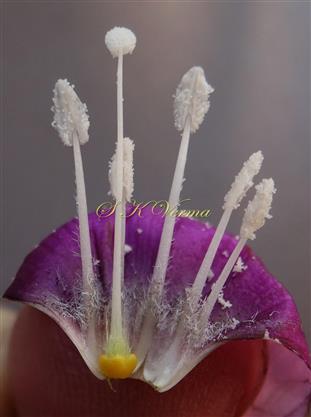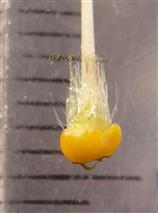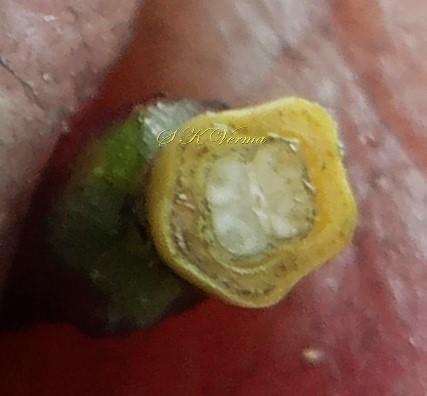IPOMOEA
Ipomoea
L., Sp. pl. 1. 159. 1753; Choisy in DC., Prodr. 9: 348. 1845; Benth., Fl. Austr. 4: 412. 1869; Clarke in Hook. f., Fl. Brit. Ind. 4: 196. 1885; Collett, Fl. Siml. ed. 2. 335. 1921 (Reprint 1980); Trimen, Handb. Fl. Ceyl . 3: 210. 1895; Hubbard & Milne- Redhead, Fl. Trop. E. Afr. 81. 1963; Fl. China @ eFloras.org 16: 301; Austin, Fl. Pak @ eFloras.org p. 34; Batatas Choisy, Mem. Soc. Phys. Geneve 6: 434. 1834; Choisy in DC., Prodr. 9: 337. 1845; Quamoclit Moench, Meth. 453. 1794; Choisy in DC., Prodr. 9: 348. 1845; Hall. f., Bot. Jahrb. Syst. 16: 584. 1893; Prain, J. As. Soc. Bengal 74: 318. 1906.
Herbs or shrubs, often twining. Leaves petiolate, usually entire, sometimes lobed or divided. Inflorescence mostly axillary, dichasial cymes, 1 to many-flowered, rarely paniculate, rarely solitary; bracts various. Flowers actinomorphic, bisexual, 5-merous, hypogynous, mostly large. Sepals 5, persistent, equal or unequal, +/- enlarged in fruit. Corolla funnelform, campanulate or salverform, variously coloured; tube long or short; limb spreading, more or less distinctly 5-lobed, folding at angles, midpetaline bands well-defined. Stamens 5, attached near the top of tube, included or exserted; filaments usually unequal, dilated and pubescent at base; anthers ovate or linear, longitudinally dehiscent. Disc annular. Carpels 2, syncarpous; ovary 2-3-locular, 2 ovules per loculus; style single long, filiform, included or exserted; stigma terminal, globose or 2-lobed. Fruit globose or ovoid, 4-6 valved. Seeds 4(-6) or fewer.
633 species
Ipomoea batatas
Ipomoea batatas
(L.) Lam., Tabl. Encycl. Meth. Bot. 1(2): 465. 1793; Fl. China @ eFloras.org 16: 306; Convolvulus batatas L., Sp. Pl. 1: 154. 1753; C. candicans Sol. ex Sims, Bot. Mag. 39: pl. 1603. 1813; Ipomoea batatas var. edulis (Thunb. ex Murray) Makino, Fl. Jap. 476. 1927; I. edulis (Thunb. ex Murray) Makino, Somoku- Dzusetsu 4: pl. 25. 1903.
Annual herb with ellipsoid, fusiform or elongated subterranean tuberous roots, sap milky, axial parts glabrous or pilose. Stem prostrate or ascending, rarely twining, green or purplish, much branched, angular, pilose, hairs with bulbous base, sometimes rooting at nodes. Leaves alternate, simple; petiole up to 13 cm long with adaxial canal; leaf blade broadly ovate to orbicular, 4-11 cm x 3-13 cm, margin entire or palmately 5-7-lobed, median lobe largest, ovate to linear-lanceolate, sparsely pilose basally, base cordate or subcordate. Inflorescence (1-)3-7-flowered; peduncle 2-10 cm, stout, angular; bracts lanceolate, 2-4 mm, early caducous; pedicel 2-10 mm long, tubercled, purple. Flowers 3.5-4 cm long and across, actinomorphic, bisexual, 5-merous, hypogynous, pink, white, pale purple to purple. Sepals 5, free, oblong or elliptic, unequal, outer 2 sepals 7-10 mm, inner 3 sepals 8-12.5 mm, glabrous or pilose abaxially, margin ciliate, apex acute or acuminate. Corolla campanulate to funnelform, 3-4 cm long and across, pink, white, pale purple to purple with dark purple throat and inside of tube, petals with a midpetaline darkened band, glabrous; tube ca. 2.5 cm long; limb 5-lobed, lobes obscure, broadly triangular. Stamens 5, inserted in corolla tube near base, included; filaments unequal, 7-11 mm long, dilated and pubescent at base; anthers 3-3.5 mm long, oblong, basifixed, longitudinal dehiscence. Disc yellow, annular or cupulate, obscurely 5-lobed. Carpels 2, syncarpous, pistil included; ovary ca. 1 mm long, pubescent, hairs long, ca. 3 mm; style ca. 17 mm long; stigma capitate, bilobed.
Capsule ovoid or depressed globose; rarely produced. (Not observed)
Common Names: Sweet Potato; Shakkar- kandi (Hindi)
